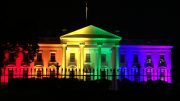By: Victor Jorges / News Director
President Donald Trump’s latest executive order against social media platforms is a step towards controlled speech, according to a communications expert.
The Trump vs. Twitter war started with a battle after the social media platform added links to two of his tweets on May 26. Mail-in voting for the 2020 elections would lead to fraud, Trump wrote.
The platform embedded a message to the tweet that read “Get the facts about mail-in ballots.” This message was hyperlinked to a list of articles defying Trump’s allegations.
Later that day, Kayleigh McEnany, the White House Press Secretary announced that Trump would be moving forward with an executive order that would deal with this issue. At that time, she didn’t give any details.
The next day, it passed, after he tweeted there would be “big action to follow.”
That same day, the official White House Twitter account sent out this video of Trump in the Oval Office talking about the order.
Trump has also accused Twitter of interfering with the 2020 election. He later called them ridiculous and stupid.
In 2016, he accused Hillary Clinton of working with Russia to influence the 2016 election. Trump has also told the New York Times to return its Pulitzer awards.
Another battle — in the wake of the George Floyd protests nationwide, Twitter commented on Trump’s tweets again.
This time, by hiding his tweet with this message: “This Tweet violated the Twitter Rules about glorifying violence. However, Twitter has determined that it may be in the public’s interest for the Tweet to remain accessible.”
After clicking on the “view” button, users could see that the President tweeted: “…These THUGS are dishonoring the memory of George Floyd, and I won’t let that happen. Just spoke to Governor Tim Walz and told him that the Military is with him all the way. Any difficulty and we will assume control but, when the looting starts, the shooting starts. Thank you!”
María Inés Marino is the coordinator of communications art at Florida International University. She believes that this new executive order “opens [the] doors for a possible controlling speech on the Internet by applying new rules and overseeing speech,” she said.
This executive order’s purpose is to amend Section 230 of the Communications Decency Act. This section was added to the act in 1996 and says that “no provider or user of an interactive computer service shall be treated as the publisher or speaker of any information provided by another information content provider.”
In other words, platforms are protected from laws that may harm them based on what their users say or do on their platform. Trump changed that.
Marino believes that users’ political engagement to participate in their own construction of democracy is the most important aspect of social media platforms — politically speaking.
“Individuals now are active participants of political discourse by publishing their own opinion,” Marino said.
Trump has misused the social media platform by the way he frames his information, Marino said.
“He is a political/public figure with enormous responsibility in regards to how you communicate to the population,” she said. “He consistently uses the platform to deliver personal opinions to millions of people, meaning he has a powerful influence in the creation of public opinion and sentiments. He represents an institution and has a huge responsibility in building a nation together.”
She doesn’t think that Twitter’s fact-checking tactic towards Trump is harmful.
“Critics say that it reflects a political bias,” Marino said. “Decisions made on political bias could be problematic,” she said.
She attributes his inept communication skills to his divisive diction in his tweets, among other things. Additionally, she believes that communication is a collective action people use to create and participate in “social reality,” she said.
“In this process, as a political figure, it is vital to deliver messages that appeal to society as a whole,” said Marino.
According to her, researchers have analyzed his tweets and found that the rhetoric behind them could divide the population by appealing to talks of “in-group” versus “out-siders group.” Basically, the good guys versus the bad guys.
“This polarized discourse runs a high risk of generating confrontation, hatred, and distrust among social individuals,” she said.
PantherNOW attempted to contact members of the College Republicans at FIU group for this story – they did not answer for comment.






Be the first to comment on "Trump’s Executive Order Against Twitter Attacks Freedom of Speech"